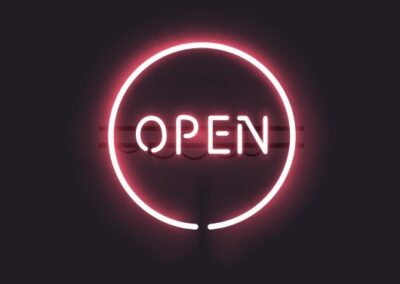In a world where the pace of change never lets up and, for some people at least, seems to be increasing, if we and our businesses are to thrive then we need to become ever more adept at adjusting to and driving change.
To quote the old adage, “to stand still in business is to go backwards”. In other words, businesses that don’t change, ultimately, die!
For most businesses we work with that’s just not an acceptable outcome. However, the prospect of change and, increasingly, constant change, is a daunting prospect for many.
So what to do? How to tackle the need for continuous change? How to develop the ability to embrace constant change without creating an unstable operation? Even if that’s achievable, how to ensure the organization is always clear about where it’s going, why it wants to go there and how it will get to where it wants to be?
After all, constant change can be wearing on those involved. It also risks confusing customers/clients and it can be frustrating for those in the supply chain – all of whom are trying to make sense of what’s happening and what it means for them/their business.
Change in 21C needs to address these challenges effectively. It requires us to be flexible yet consistent, adaptable yet well-organised, innovative and anchored. There are four key steps to the way we approach change with our clients that I’d like to share with you – purpose, vision, design and implementation,
I’ll begin by way of an analogy. Think about sailing a yacht across an ocean. There are plenty of examples of successful sailors operating effectively in choppy, difficult waters for very extended periods. They are able to keep their boat heading in the right general direction, even if circumstances require them to steer this way and that for extended periods. They typically make constant changes and adjustments – to equipment, rigging, heading, etc. Depending on weather conditions, they might even make a massive change of direction – at least for a period. They work very hard, however, not to do anything major during these periods – like replace a mast.
Nevertheless, if they lose a stabilizer they are in serious trouble and, depending on the external conditions, prone to capsize and, potentially, sink.
Similarly, a business needs stabilizers (or foundations). These might be considered the principles of the business. They rarely, if ever, change.
In Start with Why, Simon Sinek identifies the purpose, cause or belief that underpins why you do what you do as a key differentiator of highly successful businesses. In other words, why does your business exist? What will be different because of it?
We believe clarity on these questions provides the unchanging platform (the stabilizer) on which you can develop your mission and the related initiatives that will enable you to deliver on your “why”.
By way of illustration, consider the “why” for some of the most iconic brands of today:
- Apple: believe in challenging the status quo in everything they do; they believe in thinking differently; they only make a product if they can do it better.
- Harley-Davidson: believe in a life-style experience cum fantasy for bikers; they aim to be the alternative & to do what their competitors can’t or won’t do.
- Google: is constantly dissatisfied with the way things are; they believe in the democratization of access to information.
In Sinek’s words, the continuing competitiveness of these companies illustrates that “people don’t buy what you do, they buy why you do it”.
Given their solid foundations, these companies are able to effect frequent and, sometimes, radical change without ever losing sight of their purpose. Hence, Apple has evolved from a maker of desktop computers to watches, tablets and music streaming. Google doesn’t only provide a search engine, etc.
Effective change in 21C, therefore, starts with a clear sense of purpose (the why) supported by a clear vision for the future of the business.
What does that vision need to deliver, to effectively support your purpose?


